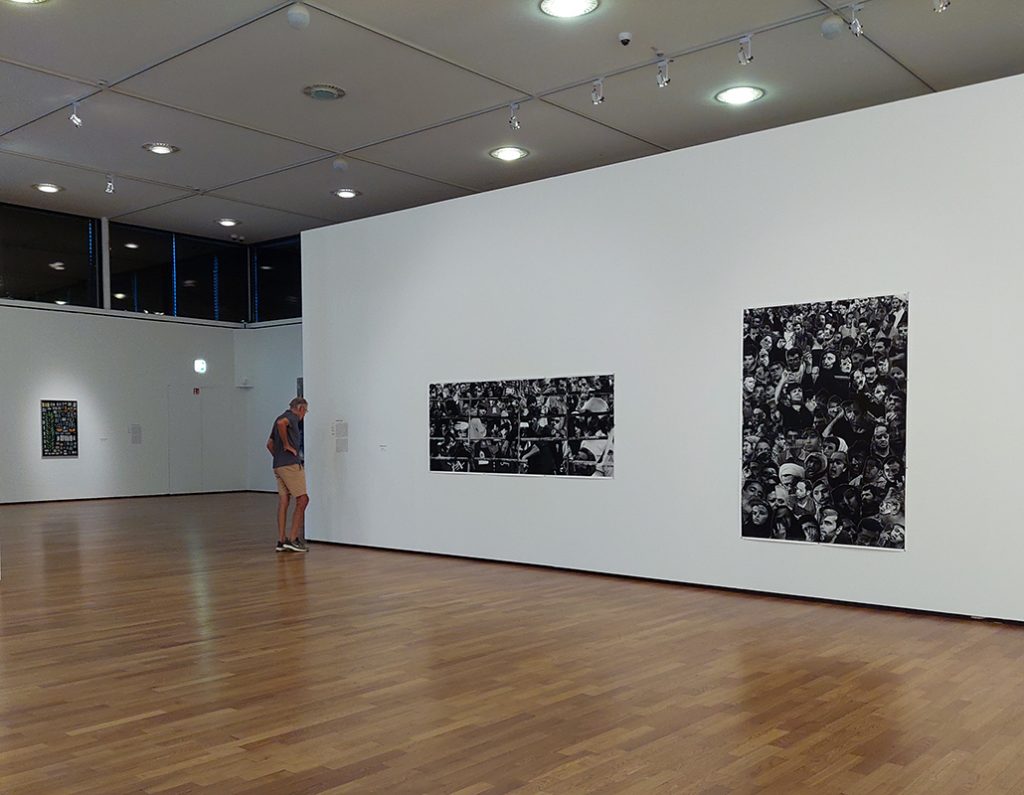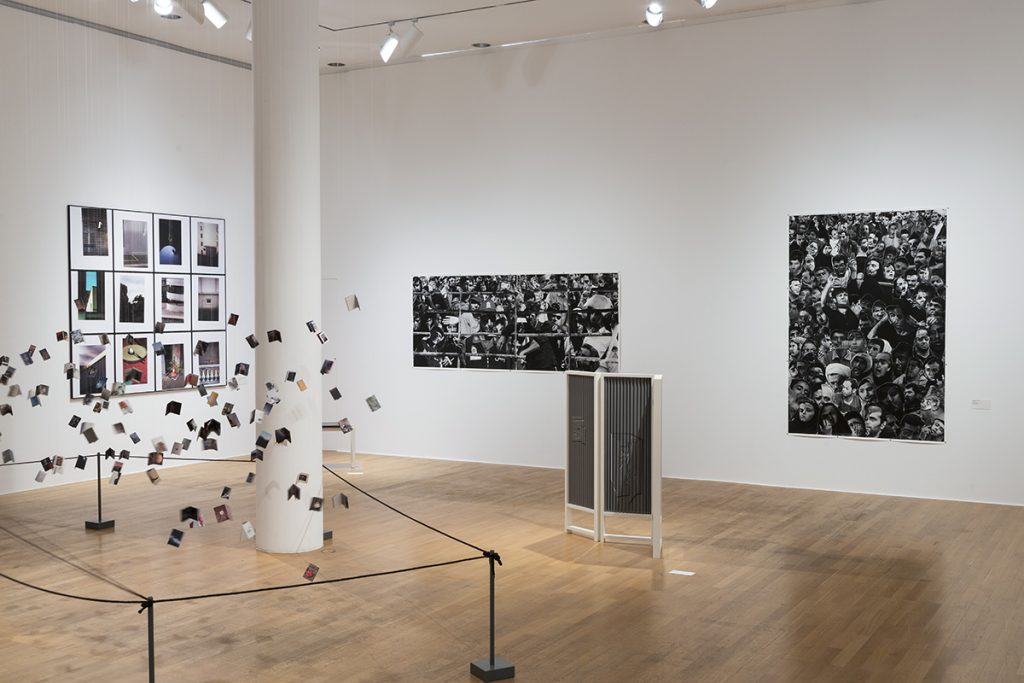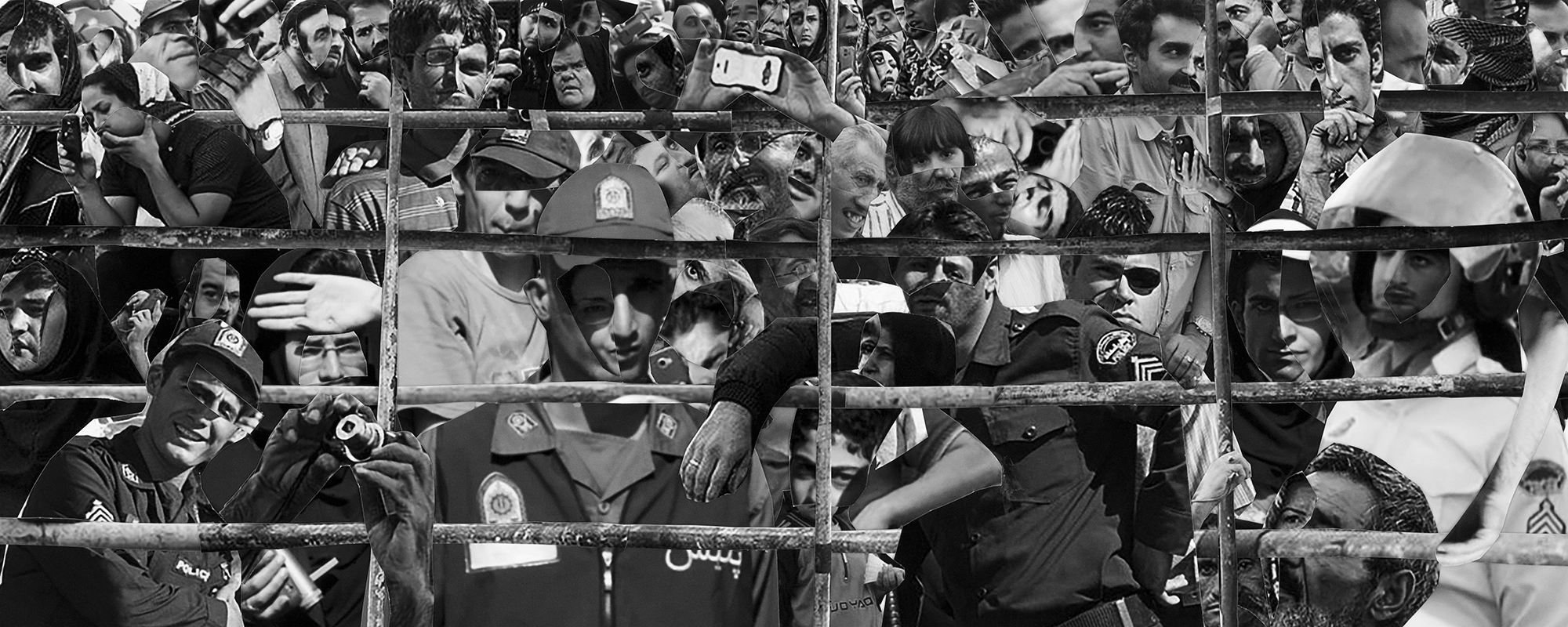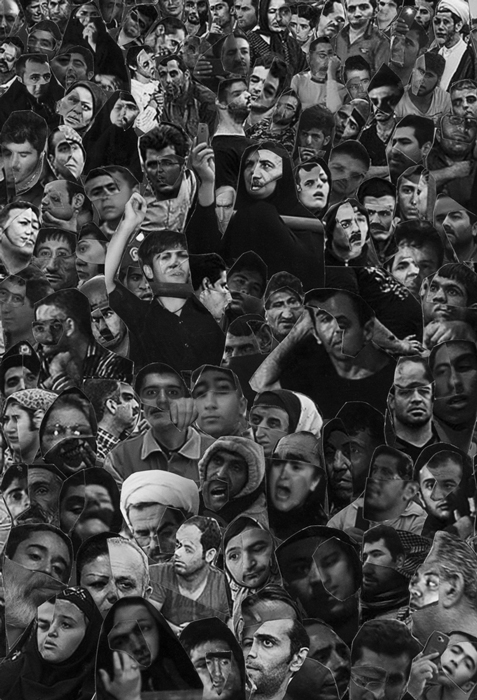
Spectators (2021- Now)
In the early morning hours of Monday, January 20, 2013, Alireza Mafiha (23 years old) and Mohammad Ali Sarvari (20 years old) were publicly hanged in Tehran’s Artists’ Park for committing a robbery in which they had stolen 30,000 tomans — about 15 euros at the time. The Islamic Revolutionary Court classified their act as a “war against God.” Despite the cold weather, a large crowd had already gathered hours before the public execution. Alireza and Mohammad Ali walked to the gallows prepared for them, in tears and visibly in shock.
Public executions of this kind in Iran have been carried out since the Islamic Revolution of 1979, with the intention of oppressing and terrorizing the population in order to suppress political dissent and prevent any activities against the government. They attract many onlookers, including random passersby, curious spectators, and even children. Some merely watch, while others take photos or videos to share later on social media, and some even appear to take pleasure in the moment.
Since 2021, I have been searching primarily Iranian but also international news websites for images of public executions in Iran. From this ongoing research emerged the extensive body of work Spectators — a series of photo collages as well as sound and video installations, largely based on images and videos of public executions in Iran that were published online. In the Spectators series, I seek to explore how violence and its victims can be represented, and how one can approach such a painful subject with empathy and dignity, without reproducing the violence. Especially today, when we are constantly confronted with images of catastrophe — endlessly reproduced by various media and online platforms — AI further accelerates the creation and spread of images, often producing false or manipulated content, all of which puts the stories of victims at risk of being lost amid vast archives of images.
At the center of my work is also the examination of the spectators’ role: to what extent they themselves become part of the violence, and what moral responsibility they bear.
*All the photocollages are based on found photographs of public executions in Iran.
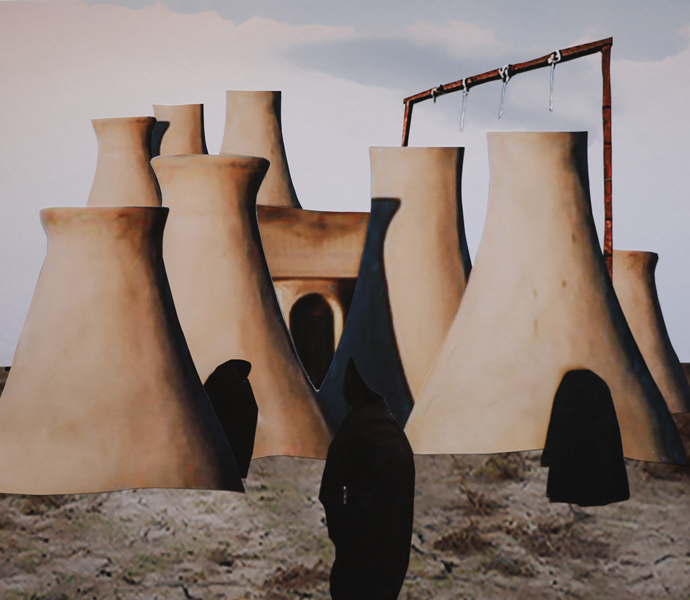
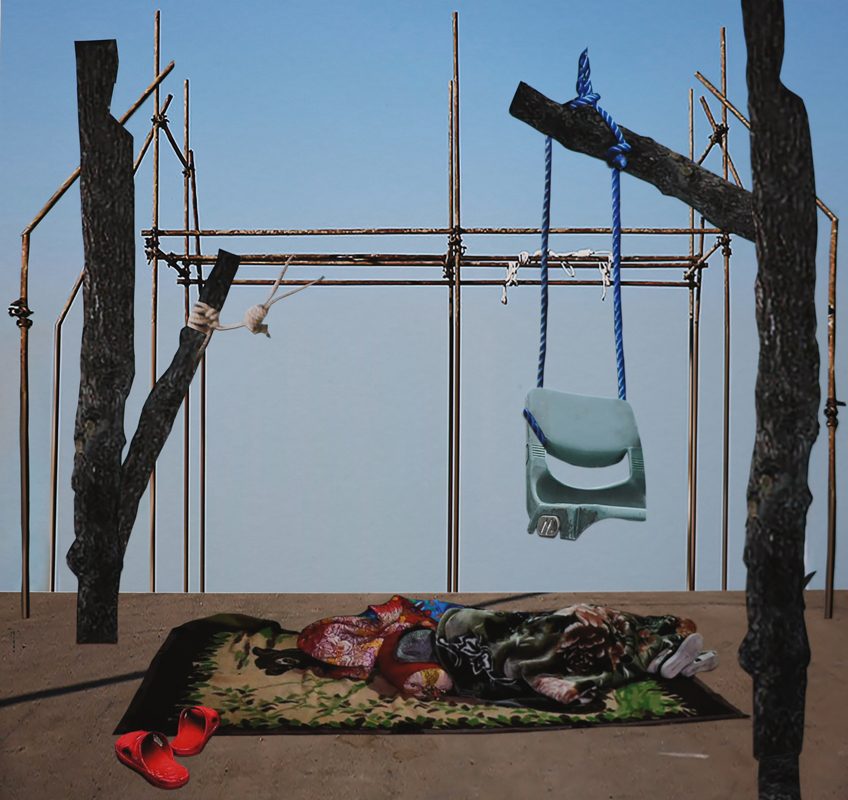
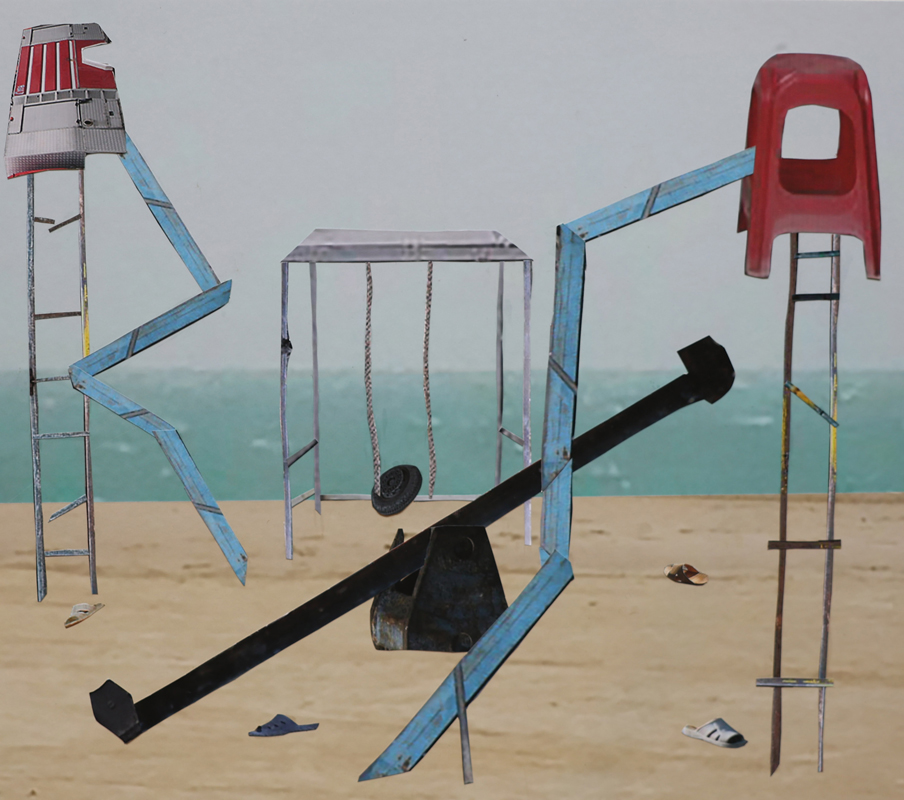
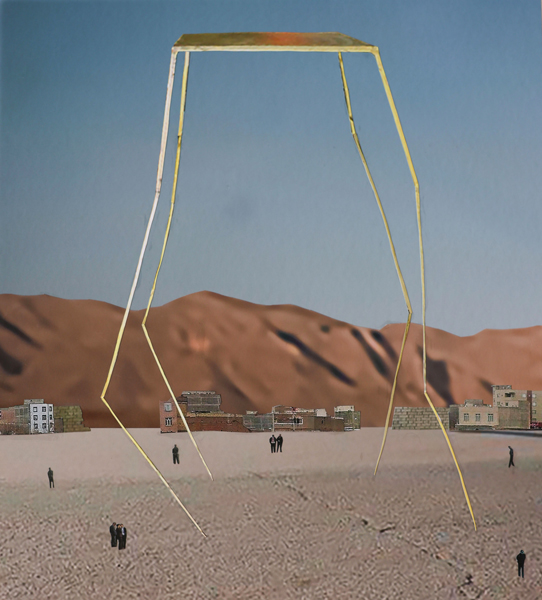
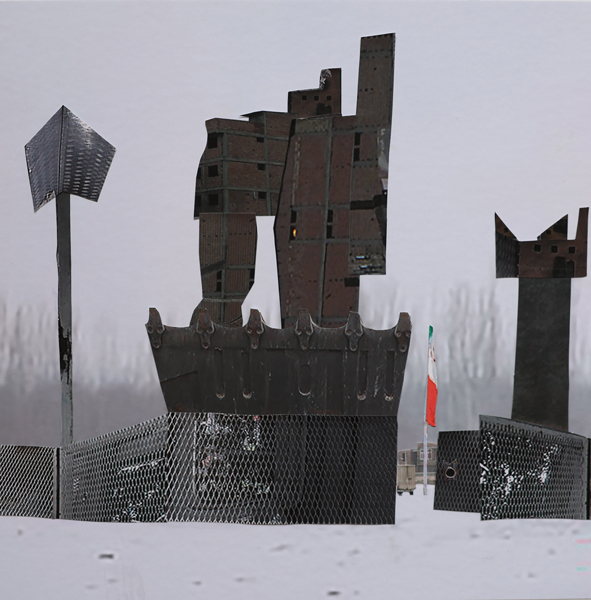
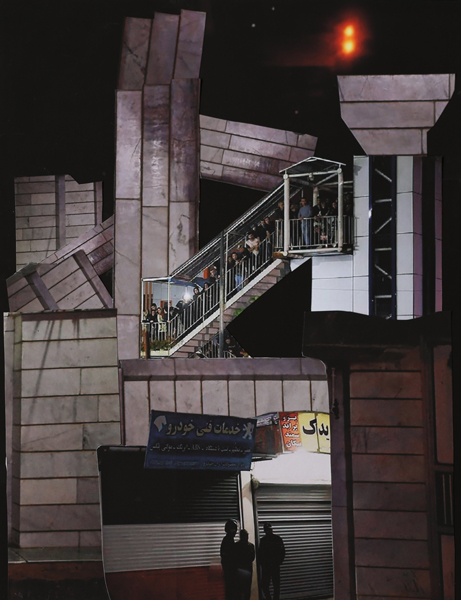
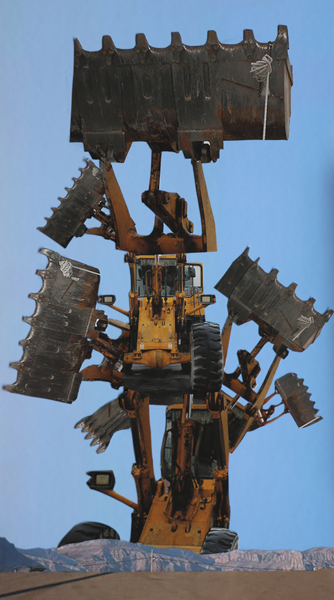
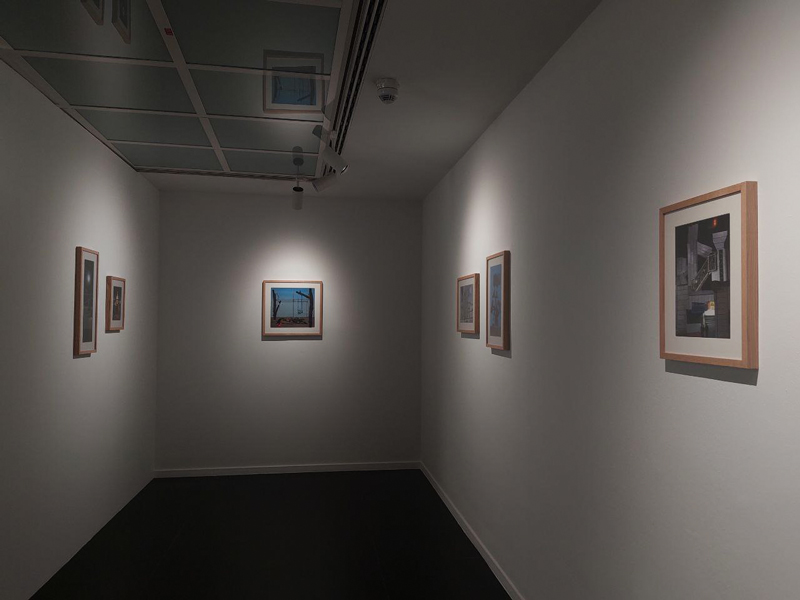
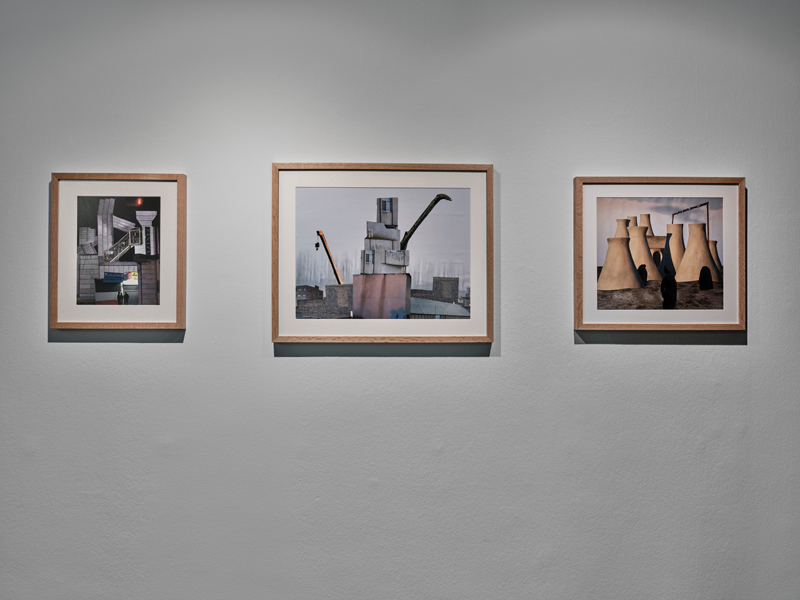
Belonging to the series Spectators, there is a set of digital collages resembling maps that depict the locations where public executions were carried out. These often took place in central locations in Iran — large city squares, busy streets, parks, or stadiums — spaces that usually seem ordinary and banal in daily life. These places were deliberately chosen to reach a wide audience and to create intimidation. This demonstrates how urban architectures can become the stage for daily state violence. The titles of these collages are direct translations of the names of the locations.
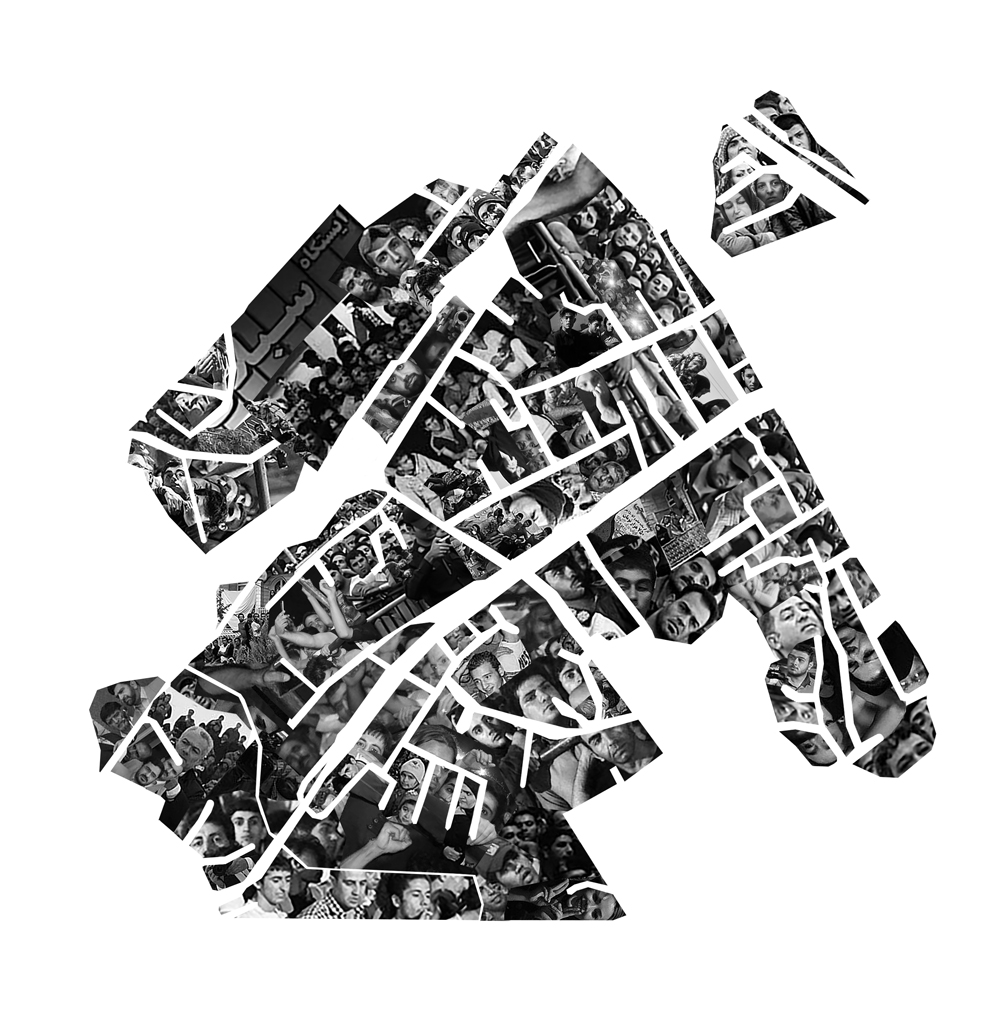
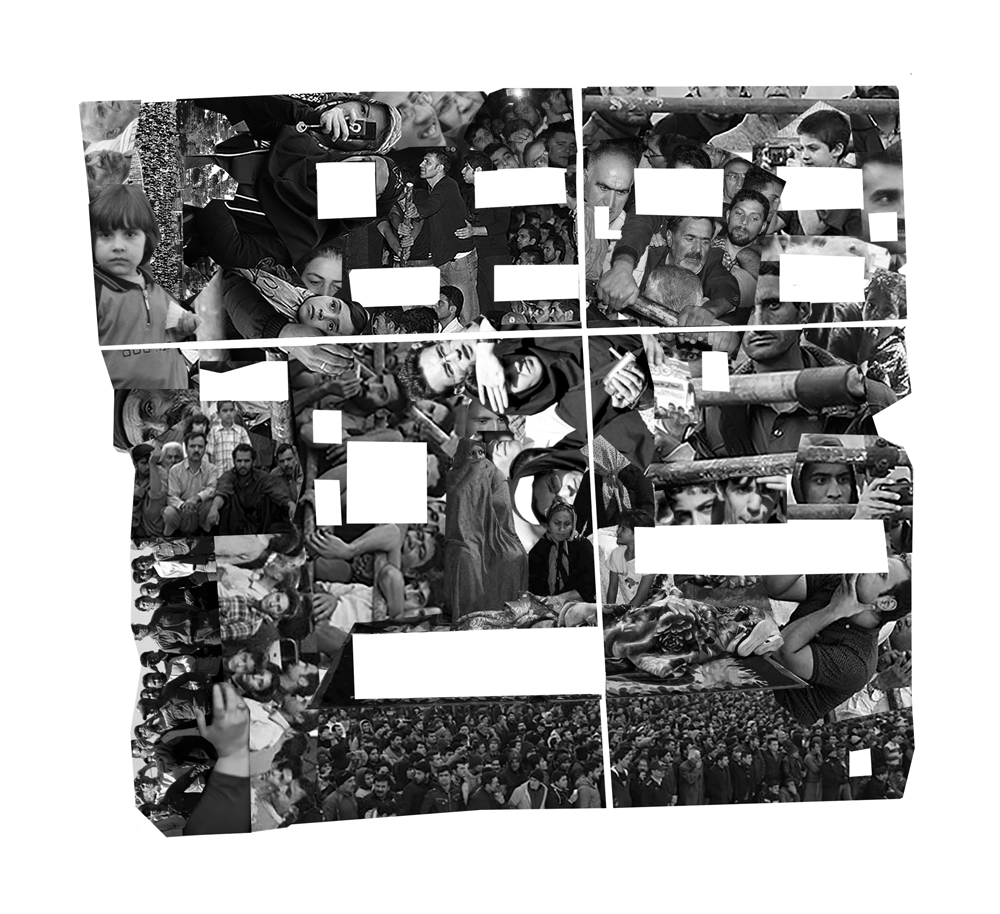
„Bitter Orange Garden“ is associated with the public execution of a 16-year-old girl named Atefeh Rajabi Sahaale. She was hanged from a crane in Neka, a small town in northern Iran, on August 15, 2004, on charges of adultery and crimes against chastity.
Alireza Mafiha, 23 years old, and Mohammad Ali Sarvari, 20 years old, were publicly hanged on charges of robbery, assault with a cold weapon, and theft of 70,000 tomans (some sources mention 30,000 tomans, roughly equivalent to $15-30) in the early hours of Monday, January 20, 2013, in Tehran’s Artists Park.
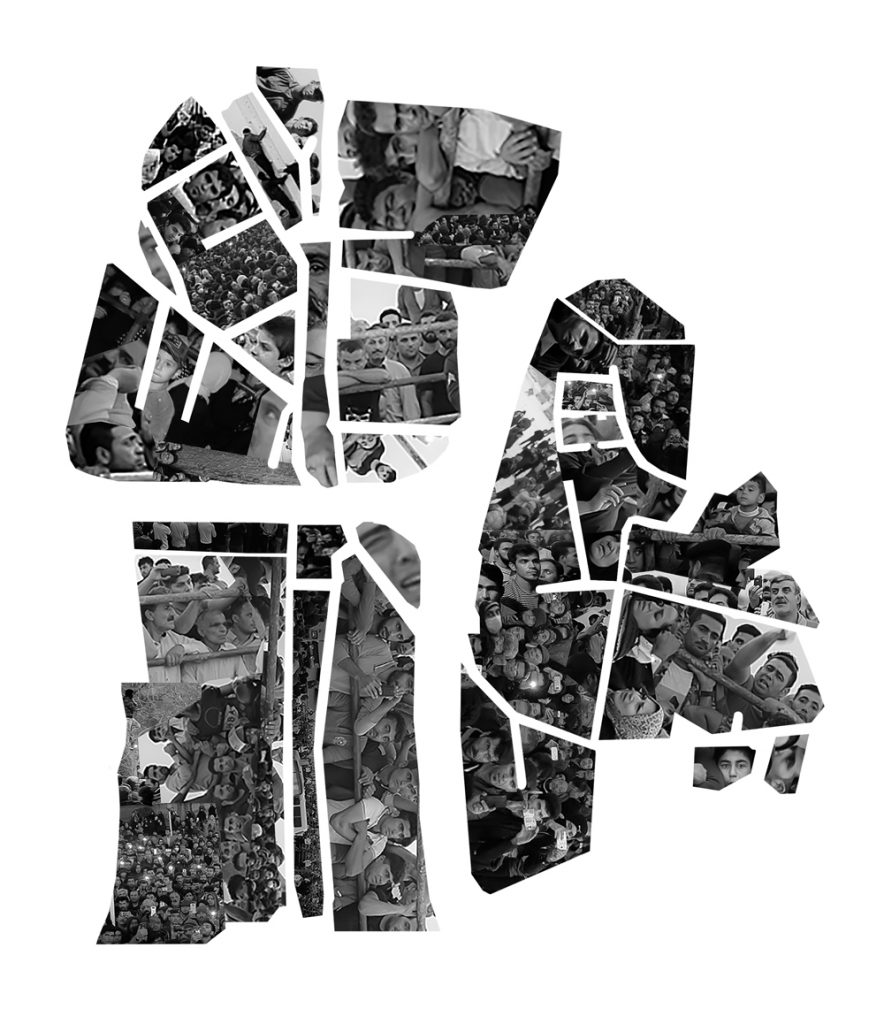
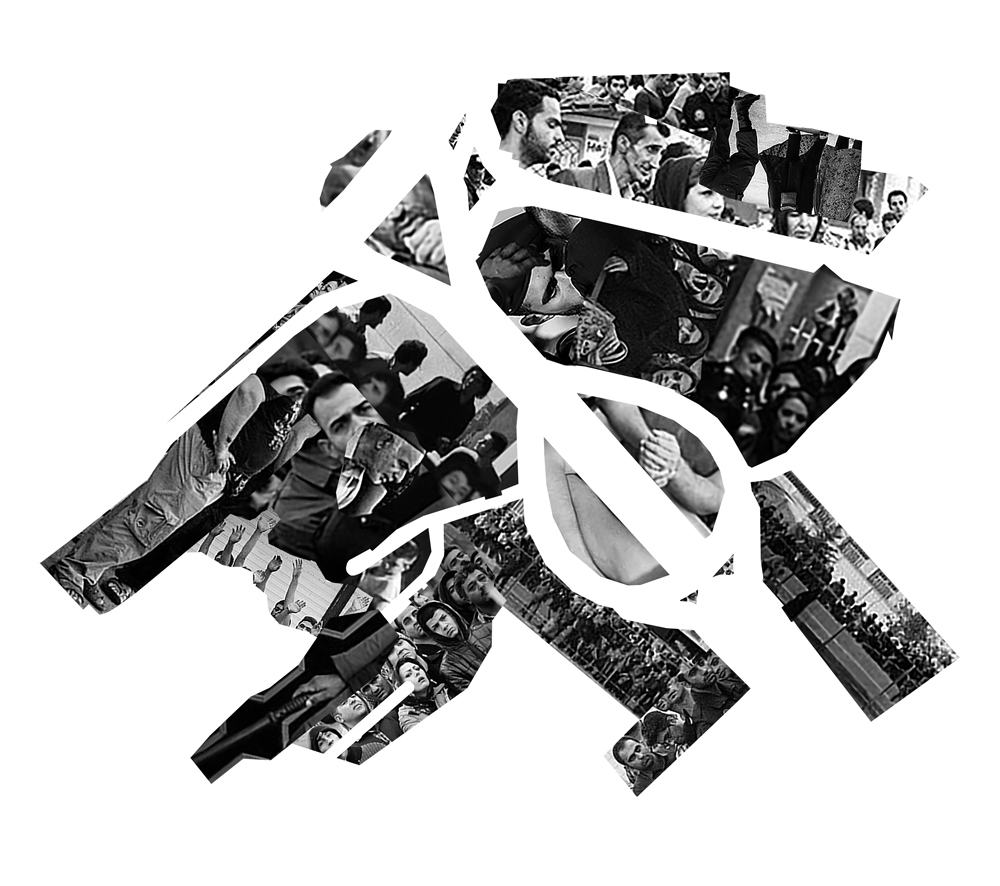
On September 13, 2011, in Tehran, a college student, Kusha Parsa Motlaq, aged 22, was publicly executed by hanging. A few days bevor the execution, he killed his classmate on Management Bridge Tehran. Both of them were final-year students majoring in Persian literature at Allameh Tabataba’i University.
On July 19, 2005, in Mashhad, Mahmud Asgari, aged 16, and Ayaz Marhuni, aged 18, were executed by hanging in public for „lavat“ (penetrative and non-penetrative sexual acts between men).
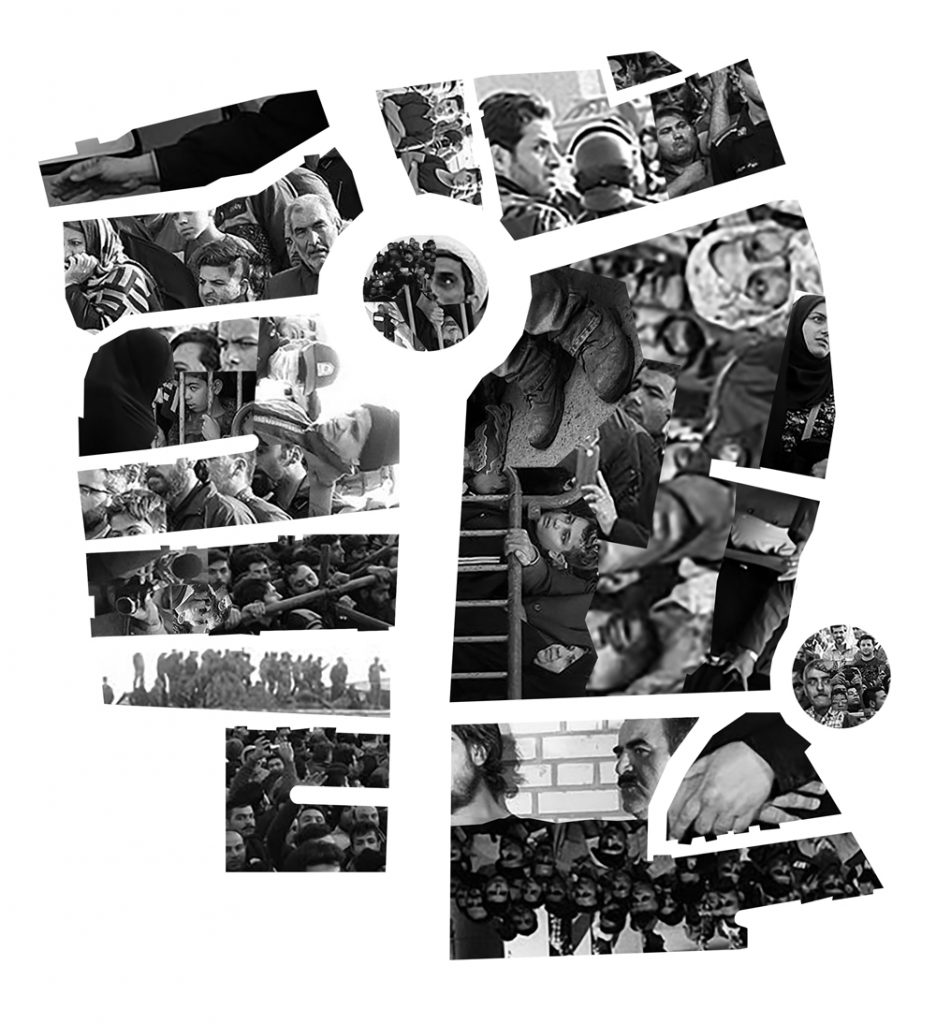
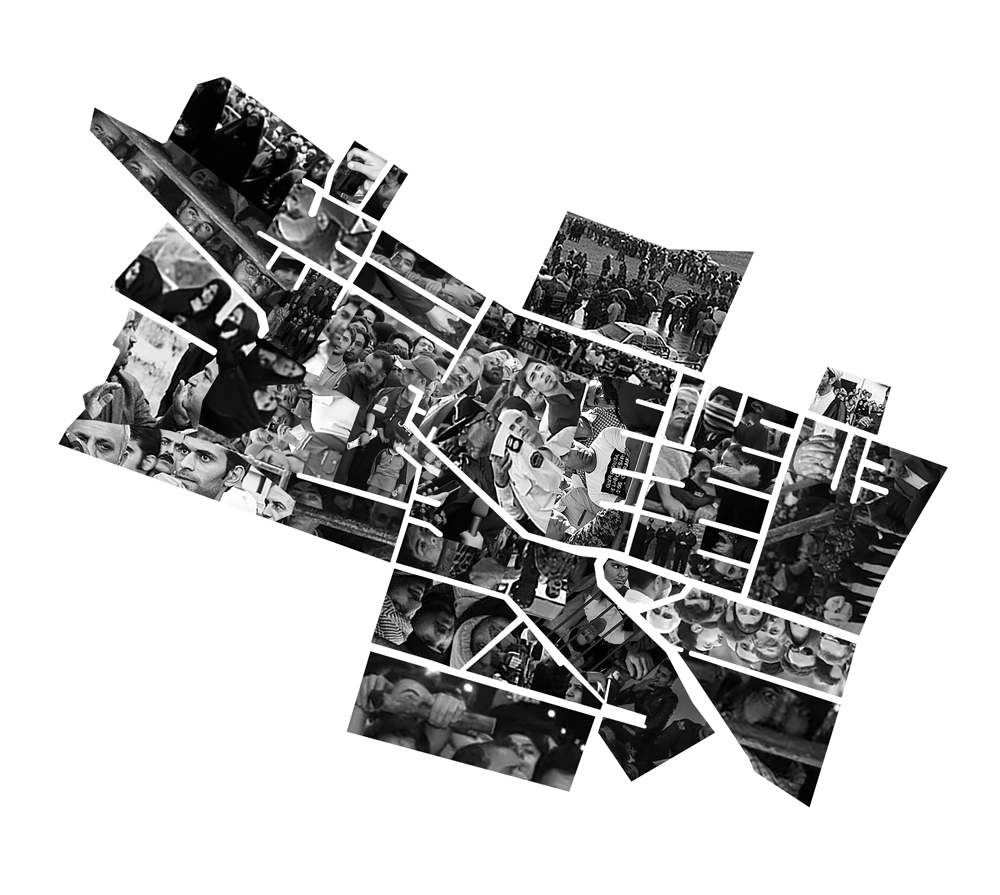
On Sunday, November 13, 2005, Tehran daily Kayhan reported that the Iranian government publicly hanged, Mokhtar N. (24 years old) and Ali A. (25 years old), in Gorgan for the crime of „lavat“ (penetrative and non-penetrative sexual acts between men).
Ali Reza Molla Soltani, aged 17, was publicly executed on September 21, 2011, in Pennyroyal Street, in Karaj.
